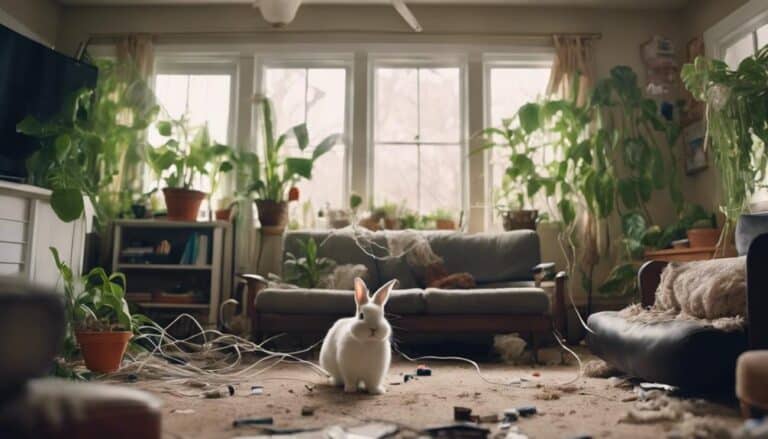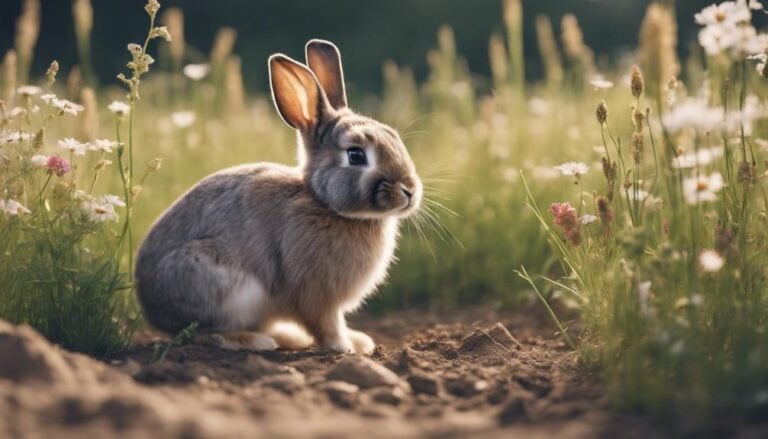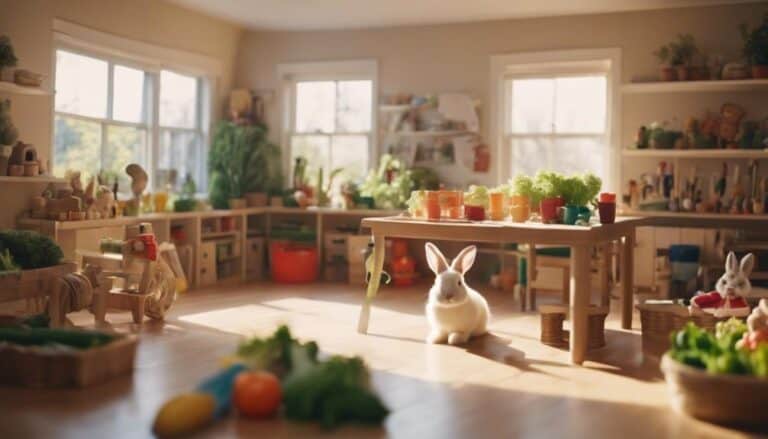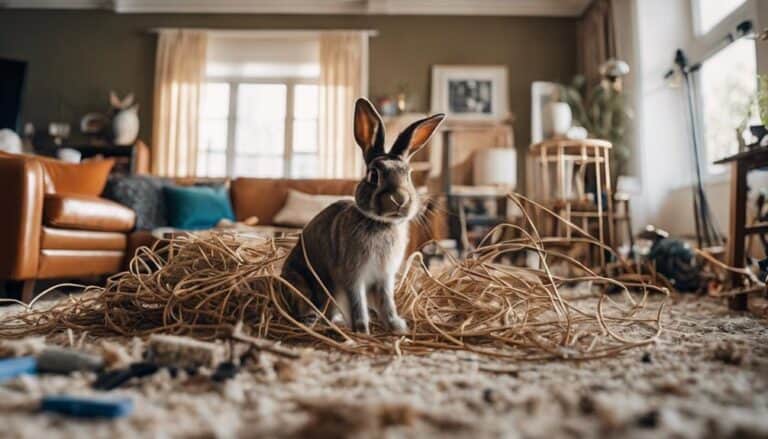If you want to guarantee your rabbit feels like royalty in its own bunny kingdom, then creating a rabbit-friendly environment is key. Imagine a haven where your furry friend can hop around with joy and contentment.
But how can you achieve this ideal setting? By implementing the five best ways to cater to your rabbit's needs and well-being. From suitable housing to enriching their habitat, each aspect plays an essential role in creating a space where your rabbit can truly thrive.
Let's explore these crucial elements together.
Contents
Key Takeaways
- Provide ample space, ventilation, and enrichment for mental and physical well-being.
- Ensure safety by rabbit-proofing the environment and removing hazards.
- Offer hiding spots, chew toys, and litter trays for comfort and stimulation.
- Neuter rabbits, create a stimulating environment, and prioritize cleanliness for their overall health.
Suitable Housing for Rabbits
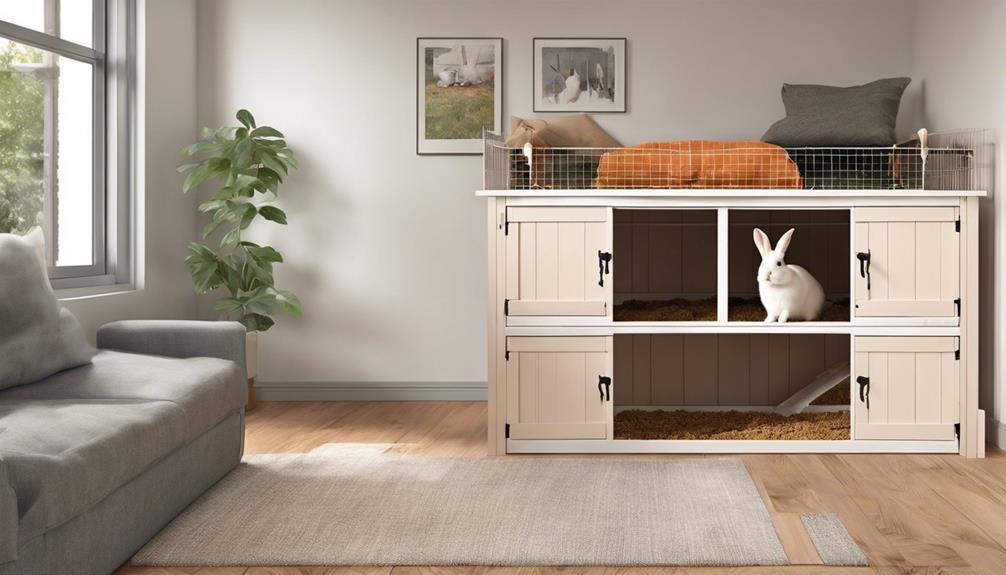
When setting up housing for your rabbits, make sure you provide a minimum of 12 square feet of space per rabbit in the living area. Rabbits need ample space to move around, stand up on their hind legs, and stretch comfortably. This guarantees they can exhibit natural behaviors and prevents health issues related to confinement.
Additionally, make certain the housing has good ventilation to prevent respiratory problems that can arise from poor air circulation. Providing safe hiding places, tunnels, and cozy corners in the housing area will help your rabbits feel secure and reduce stress levels.
Introducing chew toys won't only keep your rabbits entertained but also help wear down their teeth, which continuously grow. Remember to include a litter tray in the housing setup to encourage litter training and maintain cleanliness.
Outdoor Rabbit Enclosures
To guarantee the well-being of your rabbits in an outdoor setting, creating spacious and secure enclosures is essential. Here's how to make sure your outdoor rabbit enclosure is safe and comfortable for your furry friends:
- Provide Adequate Space: Outdoor rabbit enclosures should offer plenty of room for exercise, with a recommended minimum size of 12 square feet per rabbit to allow them to move around freely.
- Predator-Proof Your Enclosure: Use sturdy wire mesh and bury it underground to prevent predators from digging into the enclosure, keeping your rabbits safe from harm.
- Offer Shelter and Shade: Include shelters or hideouts within the enclosure to protect your rabbits from extreme weather conditions. Providing shade will help keep them cool during hot days.
- Create Enrichment Opportunities: Incorporate hiding spots and elevated platforms to give your rabbits a sense of security and encourage exploration of their environment. This will help keep them mentally stimulated and happy in their outdoor space.
Indoor Rabbit Accommodations
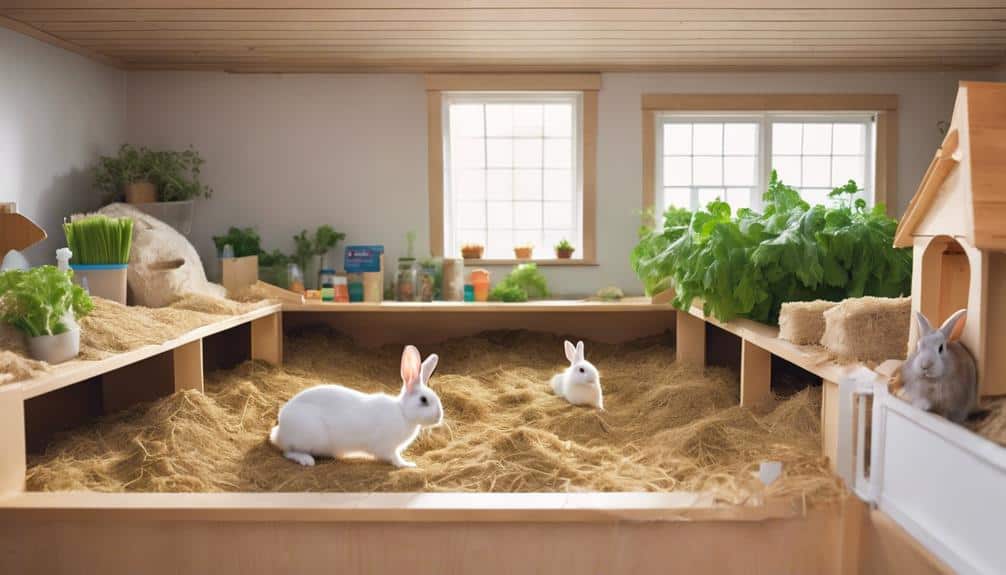
For a harmonious living environment with your beloved rabbits, ensuring their indoor accommodations offer ample space and essential amenities is key to their well-being. Indoor rabbit housing should provide at least 3m x 2m x 1m of space for a pair of bonded rabbits to move around freely.
Essential items for their living area include hay racks, water bowls to meet their fresh water needs, hiding places for security, tunnels for exploration, platforms for perching, litter trays for cleanliness, and toys for mental stimulation.
Rabbit-proofing your home is vital to prevent accidents; safeguard against hazards like electrical wires, skirting boards, and house plants. Utilize baby gates for supervised time outside their living area, ensuring they're jump-proof for rabbits.
Neutered rabbits are generally easier to litter train, simplifying cleaning routines, especially for bunnies with free roam access. Additionally, consider placing mats on hard floors to provide better grip for your furry companions.
Enriching Your Rabbit's Habitat
Creating an enriched habitat for your rabbit involves providing a variety of toys and activities to stimulate them mentally and physically. To guarantee your rabbit's well-being and happiness, consider the following:
- Rotating Toys: Rabbits need new stimuli regularly to prevent boredom and keep them engaged. Rotate toys and rearrange their environment to maintain their interest.
- Hiding Spots: Rabbits need to feel safe in their environment. Providing hiding spots like boxes and platforms allows rabbits to feel secure and exhibit natural behaviors.
- Digging and Foraging Areas: To satisfy their natural instincts, allow rabbits designated areas or toys for digging and foraging activities. This promotes physical exercise and mental stimulation.
- Territory Marking: Rabbits need to mark their territory. Encourage this behavior by providing suitable items like wooden toys or safe objects they can chew on.
Safety Measures for Rabbit Environments
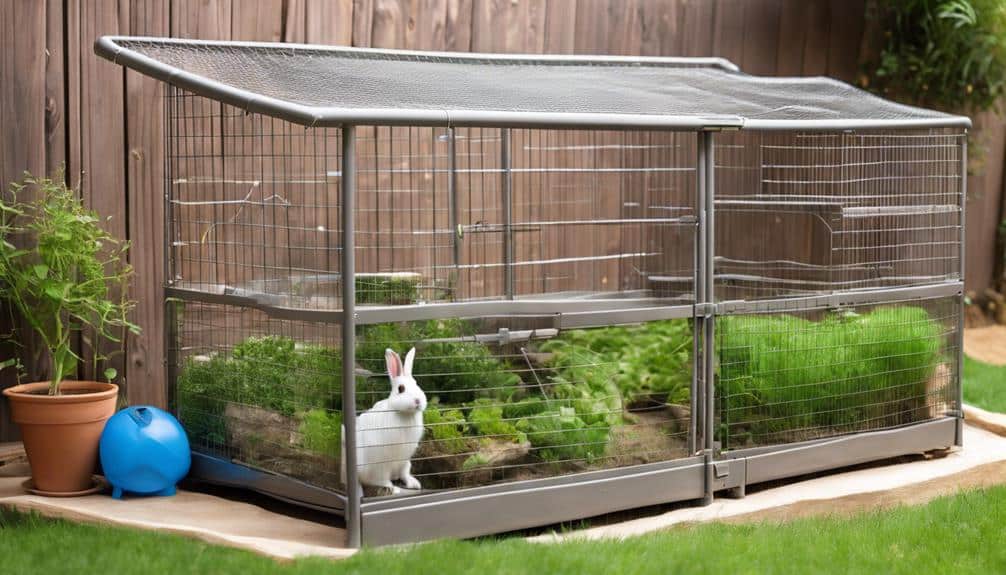
When guaranteeing your rabbit's living space, it's important to implement safety measures to assure their well-being and prevent potential hazards.
Assure the area where your rabbit will spend time is free of wires that could be chewed on, as this can be harmful. Keep house plants out of reach, as many are toxic if ingested and could harm your rabbit.
Use non-slip mats on slippery surfaces to prevent injuries, and avoid leaving small objects on the floor that could be ingested and cause choking. Secure all furniture to prevent your rabbit from overturning or damaging it.
Additionally, provide a well-ventilated environment as poorly ventilated spaces can lead to health issues. Make sure the toilet area is clean and separate from where your rabbit eats and plays.
Offer enough space for your rabbit to move around comfortably, with safe options for climbing and resting spots at different heights to keep their feet healthy and their ears from touching the ceiling.
Frequently Asked Questions
How Do You Build a Good Rabbit Habitat?
To build a good rabbit habitat, make sure you provide enrichment activities, safe hideaways, chew toys, proper bedding, adequate space, bunny-proofing tips, and socialization opportunities. These elements are essential for creating a comfortable and stimulating environment for your rabbits.
How Can I Make My Rabbit More Friendly?
To make your rabbit more friendly, focus on bonding exercises, playtime activities, and socialization techniques. Use positive reinforcement, trust-building exercises, and behavior modification. Pay attention to communication skills, respecting boundaries, and understanding body language for a strong rabbit-human connection.
What Is the Best Environment for a Rabbit?
For a rabbit, the best environment balances safety and comfort. Whether indoors or outdoors, provide enriching activities, secure enclosures, a proper diet, socialization, proof against hazards, and a quiet refuge. Prioritize their well-being.
What Is a Very Good Rabbit Habitat?
In creating a very good rabbit habitat, prioritize outdoor enclosure and indoor space, secure hiding spots, engaging enrichment activities, chew toys, a proper diet, and social interaction. These elements enhance your rabbit's well-being and happiness.
How Can I Create a Rabbit-Friendly Environment for my Pet?
When creating a bunny-friendly environment for your pet, ensure that they have a spacious and safe area to hop around. Provide plenty of fresh hay, vegetables, and water. Make sure to rabbit-proof your home by keeping electrical cords and harmful houseplants out of reach.
Conclusion
To guarantee a rabbit-friendly environment, provide suitable housing, both indoors and outdoors. Create enriching habitats with plenty of hiding spots and activities for mental stimulation. Implement safety measures such as securing enclosures and providing fresh water.
By focusing on proper housing, enrichment, and safety, you can create a comfortable and happy environment for your rabbit to thrive in. Remember, a happy rabbit is a healthy rabbit!

